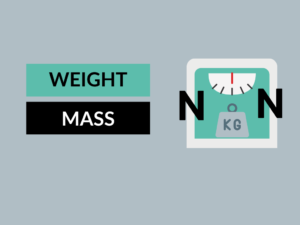The Difference Between Atomic Mass and Atomic Weight
Atoms are the fundamental building blocks of matter, and their properties are crucial in understanding the behavior of chemical elements. Two terms often used when discussing atoms are atomic mass and atomic weight. While they may seem similar, they have distinct meanings and applications. In this article, we will explore the differences between atomic mass and atomic weight, as well as their importance in various scientific contexts.
What is Atomic Mass?
Atomic mass refers to the mass of an individual atom of a chemical element. It is a measure of the total mass of the protons, neutrons, and electrons in an atom. The atomic mass is expressed in unified atomic mass units (u) or Dalton (Da), which are defined as one-twelfth the mass of a carbon-12 atom.
Examples of Atomic Mass
Let’s consider a few examples to understand atomic mass better:
- The atomic mass of carbon-12 is exactly 12 atomic mass units.
- The atomic mass of oxygen-16 is approximately 16 atomic mass units.
- The atomic mass of hydrogen-1 is approximately 1 atomic mass unit.
Uses of Atomic Mass
Atomic mass is essential in various scientific applications, including:
- Calculating the molar mass of a compound.
- Predicting the stability of isotopes.
- Determining the percentage composition of elements in a compound.
What is Atomic Weight?
Atomic weight, on the other hand, refers to the weighted average mass of all the naturally occurring isotopes of an element. Isotopes are atoms of the same element with different numbers of neutrons in their nucleus. The atomic weight takes into account the abundance of each isotope and is expressed in atomic mass units (u) or grams (g).
Examples of Atomic Weight
Here are a few examples to illustrate atomic weight:
- The atomic weight of carbon is approximately 12.01 atomic mass units.
- The atomic weight of oxygen is approximately 15.99 atomic mass units.
- The atomic weight of hydrogen is approximately 1.01 atomic mass units.
Uses of Atomic Weight
Atomic weight is important in various scientific fields, including:
- Calculating the molecular weight of compounds.
- Determining the stoichiometry of chemical reactions.
- Characterizing the physical and chemical properties of elements.
Differences Between Atomic Mass and Atomic Weight
| Difference Area | Atomic Mass | Atomic Weight |
|---|---|---|
| Definition | The mass of an individual atom of an element. | The weighted average mass of all the naturally occurring isotopes of an element. |
| Calculation | Sum of the number of protons, neutrons, and electrons in an atom. | Takes into account the abundance of each isotope. |
| Units | Expressed in unified atomic mass units (u) or Dalton (Da). | Expressed in atomic mass units (u) or grams (g). |
| Application | Calculating molar mass, predicting isotope stability, determining percentage composition. | Calculating molecular weight, determining stoichiometry, characterizing properties. |
| Isotope Consideration | Considers only the specific isotope mentioned. | Takes into account all naturally occurring isotopes. |
| Analytical Techniques | Used in mass spectrometry, NMR spectroscopy, and other atomic-scale analyses. | Used in analytical chemistry, isotope geochemistry, and atomic-scale analyses. |
| Representation | Unique for each element. | Varies with the abundance of isotopes. |
| Interchangeability | Not interchangeable with atomic weight. | Not interchangeable with atomic mass. |
| Single Value | Each element has a specific atomic mass. | Element’s atomic weight may vary depending on isotope abundances. |
| Periodic Table | Atomic mass is usually mentioned under each element symbol. | Atomic weight is usually mentioned under each element symbol. |
Conclusion:
In summary, atomic mass and atomic weight have distinct meanings and applications in the realm of chemistry. Atomic mass refers to the mass of an individual atom, while atomic weight represents the weighted average of all naturally occurring isotopes. Atomic mass is crucial for calculations involving molar mass and stability predictions, while atomic weight is essential for determining molecular weight and stoichiometry. It is important to note that atomic mass and atomic weight are not interchangeable and vary in value and representation.
People Also Ask:
- What is the difference between atomic mass and atomic weight?
- How are atomic mass and atomic weight calculated?
- What is the unit of atomic mass and atomic weight?
- What are the uses of atomic mass and atomic weight?
- Do atomic mass and atomic weight vary for the same element?
Atomic mass refers to the mass of an individual atom, while atomic weight represents the weighted average of all naturally occurring isotopes of an element.
Atomic mass is calculated by summing the number of protons, neutrons, and electrons in an atom. Atomic weight takes into account the abundance of each isotope.
Atomic mass is expressed in unified atomic mass units (u) or Dalton (Da). Atomic weight is expressed in atomic mass units (u) or grams (g).
Atomic mass is used in calculating molar mass, predicting isotope stability, and determining percentage composition. Atomic weight is used in calculating molecular weight, determining stoichiometry, and characterizing properties.
No, atomic mass is constant for a specific isotope. However, atomic weight may vary depending on the abundance of different isotopes of the element.


